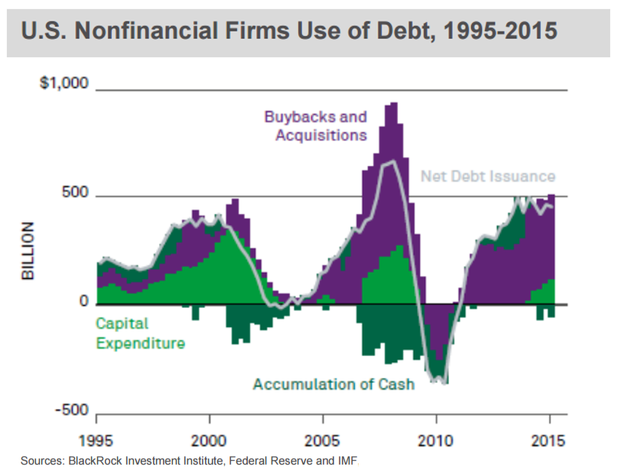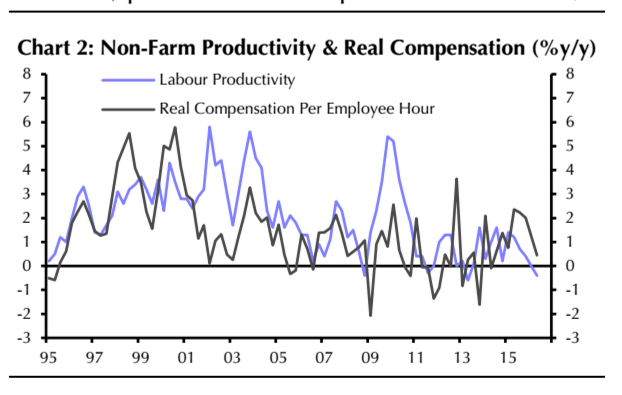The biggest threat to America's jobs machine
Something very odd is happening in the U.S. labor market.
Despite a tepid and disappointing pace of GDP growth and an ongoing corporate earnings recession (expected to last at least through its sixth consecutive quarter), payrolls have been on fire. New jobs have increased at an average of 273,500 over the last two months. Consumers are responding with rising confidence, making spending one of the few bright spots in the U.S. economy right now.
But those good feelings face a serious threat: a collapse in labor productivity and an associated increase in labor costs for businesses as the need for more workers rises to create incrementally less economic growth.
America's productivity decline has now stretched into its third consecutive quarter, the worst result since records started just after World War II. If the trend continues, job gains could be undermined as businesses are forced to curtail hiring in an effort to protect profit margins that are already under siege.
Here are the details. For the quarter ending in June, nonfarm productivity dropped at a 0.5 percent seasonally adjusted annualized rate vs. the expected 0.5 percent gain. Unit labor costs increased 2 percent vs. the expected 1.8 percent gain.
What's behind this drop? Analysts say a lack of business investment in the current economic cycle is the primary cause. Where's the corporate money going instead? Businesses are widely using their cash flow -- and adding debt financing -- for M&A and share buybacks instead of making the real capital investments needed to make workers more efficient (chart above).
In addition to a lack of capital spending, analysts cite other factors for the productivity fall-off, including baby boomer retirements and uncertainty in the business outlook. This is a continuation of a multidecade drop in productivity that followed the bursting of the dot-com bubble earlier in this century. And it's leading some to believe the easy gains -- things like air conditioning and indoor plumbing -- will lead to a loss of "dynamic" productivity gains.
Deutsche Bank economists note that low productivity can be fixed one of two ways: Either by a slowdown in hiring or by an aggressive increase in capital spending on things like new computers, faster machinery and new software. But the latter requires confidence in the economic outlook because, unlike temporary or low-cost/low-skill workers, an expensive piece of new machinery can't be easily cut from the expense line if a new recession hits.
As a result, the economists expect the pace of hiring to slow until after the U.S. presidential election as businesses take a wait-and-see approach. A drop in hiring would be terrible news for consumers -- and the economy at large -- heading into the holiday shopping season.
That's why over the near term, the decline in productivity could weigh on hiring. Gluskin Sheff economist David Rosenberg noted that based on GDP growth, monthly payroll gains should only be around 65,000 to 85,000.
Looking out a little further, over the medium term this could also weigh on wage gains. According to Capital Economics, the evidence suggests that weak productivity is already having a dampening effect on higher pay (chart above).
And over the long term, productivity is the the fuel of increased living standards. According to IHS Global Insight, if productivity growth is 2 percent, living standards double every 36 years. But if it's 0.7 percent, a doubling takes 102 years.
Earlier this year, Federal Reserve Chair Janet Yellen optimistically said she believed productivity would soon bounce back. And futurists point to emerging technologies like autonomous vehicles, artificial intelligence and augmented reality as potential productivity boosters.
Let's hope they're right.


